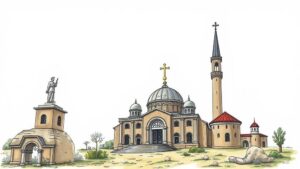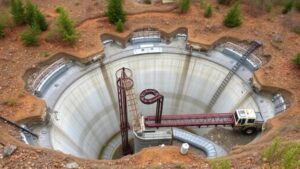Mining Early Forge Workshop Plans for Metal Crafting Relics
Mining Early Forge Workshop Plans for Metal Crafting Relics
The study of early forge workshops and their role in metal crafting is a vital area of research within archaeology and history. This research article delves into the plans and evidence of operational sites during the ancient period, focusing specifically on the craftsmanship, techniques, and output of these forges. Understanding the methodologies employed in these workshops not only provides insight into ancient technological advancements but also highlights the cultural significance of metalworking in early civilizations.
Historical Context
The evolution of metalworking began around 6000 BCE, with the advent of smelting techniques that allowed for the manipulation of metals such as copper and, later, bronze. earliest workshop plans are discovered predominantly from regions such as Mesopotamia, Egypt, and later in the Indus Valley. For example, evidence from the site of Hasanlu in Iran reveals a sophisticated metalworking culture dating back to 700 BCE, illustrating advanced tools and methodologies employed by these ancient craftspeople.
Technological Advancements
Early forge workshops relied heavily on craftsmanship and the strategic use of available resources. Research shows that ancient blacksmiths employed charcoal as fuel, which facilitated high temperatures necessary for metalworking.
- Smelting Techniques: The earliest metal crafts involved processes such as roasting and then smelting copper ores to extract metal. Evidence from archaeological sites shows various furnace designs that maximized heat retention.
- Alloying: The introduction of tin to copper to create bronze around 3000 BCE marked a pivotal advancement. This transition is evident from several archaeological findings, such as those at the ancient city of Ur in present-day Iraq.
Archaeological Evidence
Surveying historical documents and archaeological records provides essential insights into the structure and layout of early workshops. Notably, the remains of the ancient forge at Borsippa, Babylon, include tools such as chisels and hammers preserved through time, dating back to approximately 2000 BCE. e artifacts suggest a systematic approach to metalworking.
Cultural Implications
The role of metalwork in ancient societies extended beyond mere craftsmanship. Artifacts produced in these workshops were significant for trade and were also considered status symbols within social hierarchies. For example, the intricate gold jewelry discovered in tombs across ancient Egypt indicates a connection between metalwork and wealth accumulation, alongside religious significance.
Methodological Approaches
Contemporary analysis of forge workshops employs both fieldwork and laboratory techniques. Ethnoarchaeology, for example, has become an indispensable tool, allowing researchers to observe current metalworking practices that may reflect ancient methods. Also, radiocarbon dating and thermoluminescence dating techniques are effective in situating these workshops in the correct historical contexts.
Case Studies
One notable case study involves the Etruscan civilization in Italy, known for its unique approach to bronze working. Excavations such as those in Vetulonia provide a wealth of forge-related artifacts, illuminating the sophistication of their techniques. Excavated tools and furnace remnants date back to around 800 BCE and exhibit an artisan expertise that contributed significantly to their economy and cultural practices.
Conclusion
The significance of early forge workshops extends from technical innovations to social implications within various ancient cultures. Through detailed archaeological explorations, we gain insight into the complexities of early metal crafting and its lasting influence on civilization. As we continue to explore these ancient relics, understanding their significance fosters a deeper appreciation of human development in craftsmanship and material culture.
Future research should focus on the interdisciplinary approaches combining archaeology, history, and technology to further unravel the intricate tapestry of ancient metalworking. This blend will undoubtedly enhance our understanding of how these workshops laid the foundation for future metallurgical progress and societal development.


